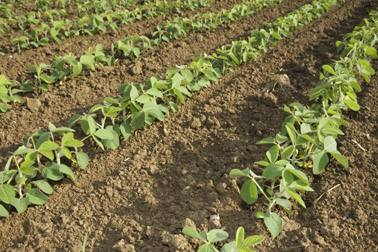
By Christine Dragisic
You might be eating breakfast as you read this blog. Maybe you’re perusing the news over a bowl of cereal, a plate of eggs or some much-needed coffee. If so, welcome! This post is actually about you.
Let me explain.
I’m sitting in a conf erence room in Buenos Aires, Argentina, surrounded by colleagues from around the world: soy producers, traders and processors; banks; food companies; and NGOs from Latin America, the U.S., Europe and Asia. We are gathered to advance the concept of our joint passion — “responsible soy.” A strange passion, you might say, but it’s a fascinating one. Consider:
Soy is grown throughout the world, from the Midwestern U.S. to Brazil, Argentina, Bolivia, China and India.
Soy is one of the most important crops in the world, used not only for human food but for oil, animal feed, cosmetics and biofuels.
Soy is also a crop that historically has been associated with negative social and environmental issues: agrochemical runoff, water pollution, unsafe working conditions, land concentration and the conversion of some of the most species-rich lands in the world.
Yes, the soy on your supermarket shelf might be linked to deforestation in South America, the “dead zone” in the Gulf of Mexico or child labor in India. But it does not have to be this way. Soy can be, and is, produced more sustainably:
Good farm design and management can eliminate many of the environmental risks like runoff and soil erosion.
Addressing the role of the farm in the larger landscape can help avoid problems like deforestation and species loss.
Following local and international laws and best practices can minimize labor and safety risks.
Rewards for more sustainable production can improve livelihoods and incomes.
And so my colleagues and I sit in this room as members of the Round Table on Responsible Soy (RTRS), trying to design and implement a global system that stimulates and rewards more sustainable soy production. The RTRS was founded in 2006, and its Standard was approved in 2010. This Standard has codified many of the social, environmental and agricultural best practices that make soy production more responsible. We got good news recently about the Standard’s progress: The first 85,000 tons of RTRS-certified soy, produced following the good practices set out under the RTRS Standard, reached Europe last week.
But we must do more. We need producers to adopt the best practices outlined by standards like the RTRS. We need to give producers, especially small farmers, the skills and knowledge to do so. We need companies to request more sustainable soy and banks to finance its production. We need incentives for all actors to adopt more sustainable standards. We need consumers to care.
Why does this matter to you? Because you likely consume soy every day, whether you know it or not. It is in the cereal that you eat, the toast on your plate, the creamer in your coffee. The chickens that laid your eggs, the cows that produced your milk, and the pigs your bacon came from were fed on soy meal. Vegetarian? Tofu is soy, as is (obviously) soy milk. Did you drive to the supermarket in a diesel-fueled car or take the bus? There is probably soy-based biodiesel blended into your gas.
In short, you are a key part of the soy industry. You are linked to farmers in India, Iowa and Brazil. You can influence whether the soy on your plate or in your gas tank contributed to the felling of forests, the disappearance of species and the exploitation of workers. You can choose to buy products made from more responsibly produced soy, soy that protects people and the environment. You can vote with your wallet and with your voice, encouraging companies to produce and buy more sustainable soy. In the end, YOU are the key link in this fascinating chain from soy fields to the plate. Those of us sitting in this room are counting on you.
Courtesy of: Conservation International

